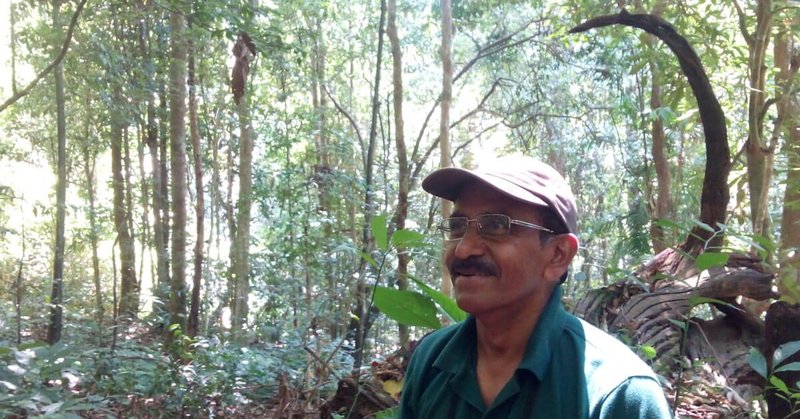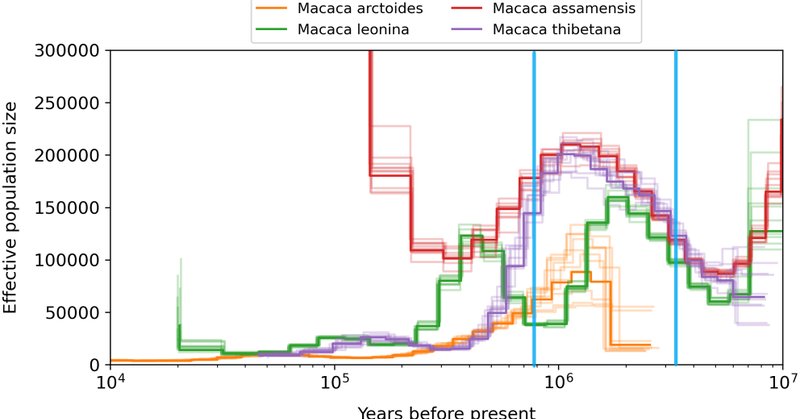
Dr.G.Umapathy
@gupathy
Followers
271
Following
12K
Media
35
Statuses
986
Chief Scientist at CSIR-CCMB and Working for Biodiversity Conservation. Views are personal! RTs are not endorsement!
Hyderabad, India
Joined May 2010
Deeply saddened by the passing of Dr. S. Shivaji, a visionary scientist, mentor, and a driving force behind the establishment of LaCONES, CSIR-CCMB. His pioneering contributions to wildlife conservation and microbial ecology will continue to inspire generations. RIP, sir. #CSIR
0
0
3
A collaborative project that examined gibbons' long arms, phylogeny, and revealed how climate has shaped the history of gibbon evolution.@CSIR_IND
Wonder why gibbons have such long arms? A groundbreaking study on gibbon genomes reveals that a gene, Sonic Hedgehog, is responsible for their iconic elongated limbs. @gupathy's lab contributed by studying the Indian gibbon genomes. https://t.co/1BJdIdKotK 1/2
0
0
2
Recent study from @gupathy's lab finds that human presence in tiger habitats is affecting the gut health of India’s wild tigers. They studied tigers of Corbett, Kanha and Bandhavgarh, Tadoba and Periyar. More details here: https://t.co/0eeVo0MmY5
@CSIR_IND
1
3
17
Introducing the "CMC," -CCMB microscopy course. Top scientists Lectures, hands on training and theory by industry leaders. There will be very limited seats as we want to deliver the best. May be just 15. Please register ASAP.
Introducing the CCMB Microscopy Course. Happening 8-12 Sept. Registrations are open now! This is for all things at the cutting edge of light microscopy - from sample preparation to image analysis. @CSIR_IND
0
3
12
What makes the brain size of primate species? Using whole genome data from 50 species of loristo chimpanzees, we found that higher-quality diets (fruits) require more energy to grow and maintain metabolically expensive brains. @CSIR_IND
https://t.co/goGwDQRoXV.
0
1
7
Never give up . In sports and in life!! Vamos! ⭐️
36
119
3K
As part of intl collab, this review, published in Nature Reviews Biodiversity, brings out genetic diversity & evol. of non-human primates and the urgency of conserving genetically diverse primates amid habitat loss and climate change. https://t.co/RghqFOYMD5
1
3
25
𝐓𝐡𝐢𝐬 𝐜𝐨𝐮𝐥𝐝 𝐛𝐞 𝐈𝐧𝐝𝐢𝐚'𝐬 𝐌𝐨𝐦𝐞𝐧𝐭: 𝐅𝐫𝐨𝐦 𝐁𝐫𝐚𝐢𝐧 𝐃𝐫𝐚𝐢𝐧 𝐭𝐨 𝐁𝐫𝐚𝐢𝐧 𝐆𝐚𝐢𝐧 As the Western academic world faces an unprecedented funding crunch, with reports of university departments shutting down and entire research fields under threat, India
13
15
76
Novel tools for invasive fish species detection and management #eDNA #genomics by @gupathy @ccmb_csir @Fishy_Neel @_GopiKrishnan
#NCIAF @ZoologicalI @moefcc
0
2
25
"The untimely demise of Dr. Ajith Kumar, who conducted seminal research on the lion tailed macaques of these forests in 1987 has rendered both the forests that he loved and the wildlife conservation community in India, silent." https://t.co/QMD6EqccqW
india.mongabay.com
There’s an emptiness in the wild forests of Varagaliar in southern Tamil Nadu. The untimely demise of Dr. Ajith Kumar, who conducted seminal research on the lion tailed macaques of these forests in...
1
11
18
He was my lifetime mentor and guide! He also mentored many researchers in India, and he was a wonderful human being and an excellent ecologist!
We are deeply saddened to share the passing of Dr Ajith Kumar, eminent wildlife biologist & guiding force of the MSc Wildlife program at NCBS. NCBS & the wildlife biology community have lost a remarkable leader & mentor—heartfelt condolences to his family, friends & colleagues.
0
2
26
@gupathy @CSIR_IND @Mihir_Tri @ShivakumaraManu The study highlights the need for species-specific conservation plans in the current times of yet another ongoing climate change. https://t.co/4hU5vWHJW5 3/3
onlinelibrary.wiley.com
Northeast India's diverse geography has created numerous niches, promoting species evolution, with past climate change playing a significant role in primate speciation. Using climate modeling and...
0
1
3
@gupathy @CSIR_IND @Mihir_Tri @ShivakumaraManu Their study shows that some of these species originated in this region and others migrated from Southeast Asia. They also found that some of the species populations declined when the climates changed whereas some even increased. 2/3
1
1
3
#NewResearch Recent study by @gupathy's lab reminds us that climate is key to how populations of different organisms grow. They studied population history of nine primate species found in Northeast India during two climatic periods - Pliocene and Pleistocene. 1/3 @CSIR_IND
1
7
14
Mass turtle nesting underway in Odisha, India Approximately 300,000 olive ridley turtles have arrived on the coast of Odisha for their annual mass nesting phenomenon, a remarkable spectacle of nature.
285
3K
23K











